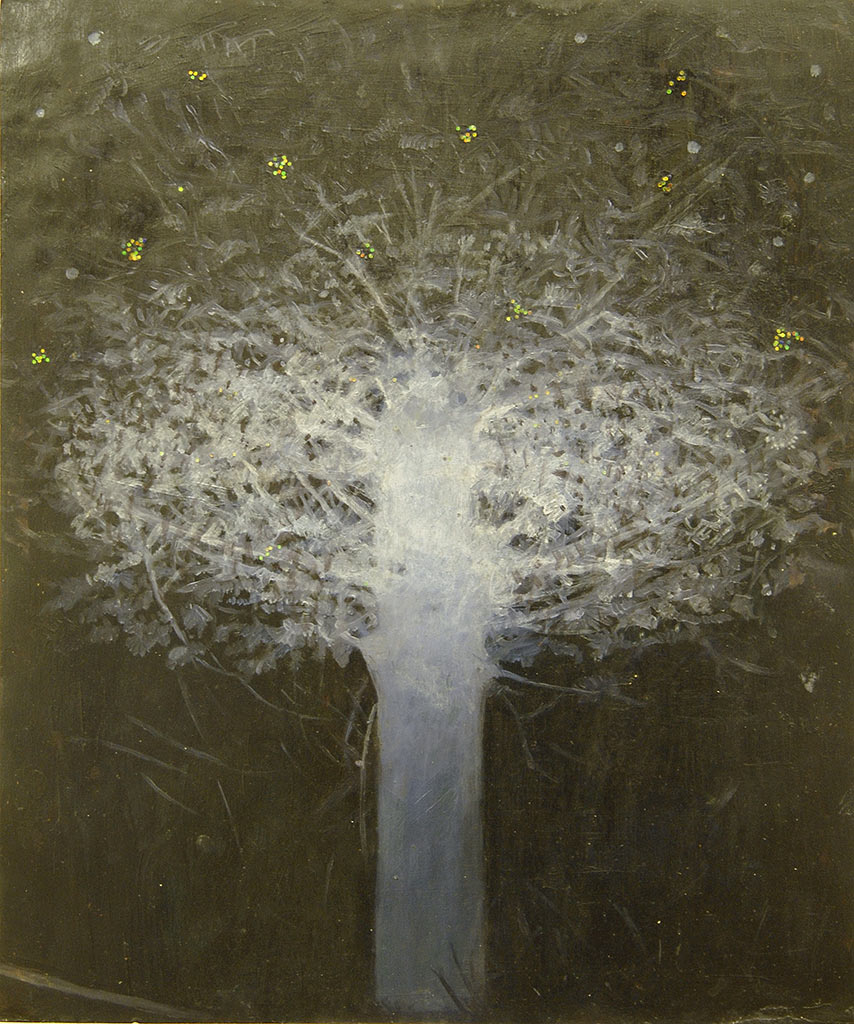Bergholzli
Nadia Hebson
8-31 March 2007
Nadia Hebson, Skagway (detail), 2006, oil on board, 65x75cm. Photo: Colin Davison
Nadia Hebson, Glacier, 2006, oil paint on zinc, 7x10.5cm
Nadia Hebson, Milena (detail), 2006, oil paint on zinc, 48.5x35.5cm. Photo: Colin Davison
Nadia Hebson, Bergholzli (detail), 2006, oil on canvas, 174.5x195.5cm. Photo: Colin Davison
Nadia Hebson makes melancholic portraits, marine-scapes and flower studies coalesced from a proliferation of collective art historical imagery. The paintings occupy an ambiguous position – it is unclear whether they explore real or fabricated, scenarios, events or personalities. This miscellany of jumbled imagery thwarts a logical narrative interpretation but its elemental nature suggests a psychological intent.
Nadia Hebson, ‘Bergholzli’, 2007, (left) Milena, 2006, (right) White tree, 2004, installation view. Photo: Colin Davison
Painting on copper, zinc, or canvas, Hebson’s approach varies accordingly. Flower studies are often painted al primo, an immediate response from eye to hand: one chance to render the flower, the air and light around it, to be realised in hours or the painting is scrapped. Portraits arise from confabulations of friends and self, imagined as the Mater Dolorosa of early Flemish painting, transposed to the medieval landscapes of Altdorfer or Grunewald. Painstakingly built up on copper and zinc sheeting, acute detail emerges through layers of subtly coloured lead paint. Despite the variety of handling, methods, and source material, all the paintings are conceived in low tone; translucent colours glow, especially in the ongoing series of shipwrecks, ice floes, and ghostly seascapes.
The search for an arcane image and a fascination with the mutable, alchemical properties of oil paint leads Hebson to delve into the collective unconscious but also to rifle art history. In doing so she attempts to understand the once emotive currency of dramatic iconography. Hebson sees her practice as “painting and lying”, with the pursuit of any standard truth untenable, whether this be visual, historical or personal. The filmmaker Werner Herzog said about his own creative process: “I believe you can discover a very deep, ecstatic truth by fabricating. My films find deeper truth in trying to be inventive”.
Nadia Hebson, ‘Bergholzli’, 2007, (left) Bergholzli, 2006, (right) Skagway, 2005, installation view. Photo: Colin Davison
Nadia Hebson, ‘Bergholzli’, 2007, (left) Skagway, 2005, (right) Glacier, 2006, installation view. Photo: Colin Davison
Take a video tour of the exhibition
Share this page




